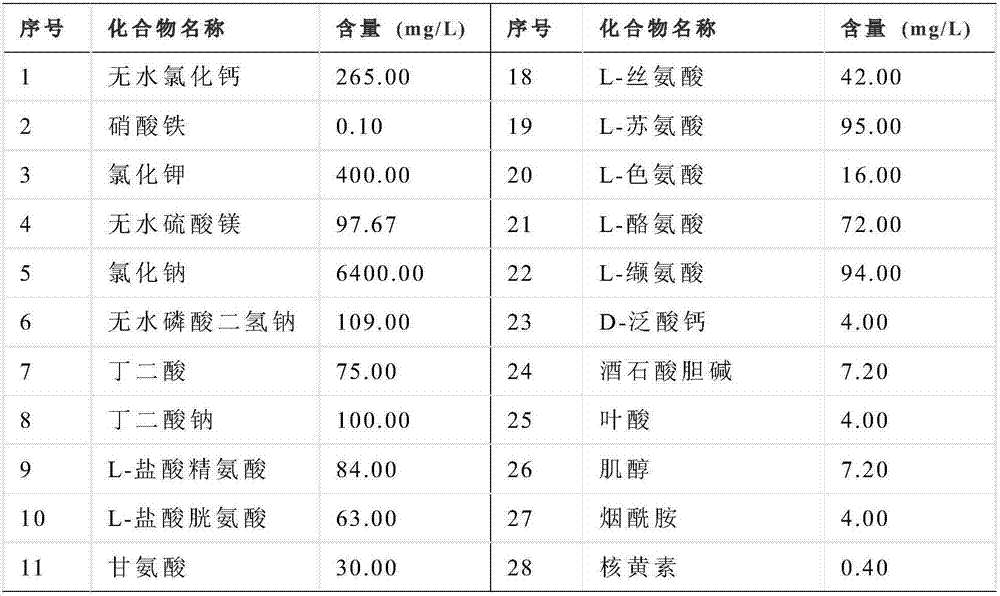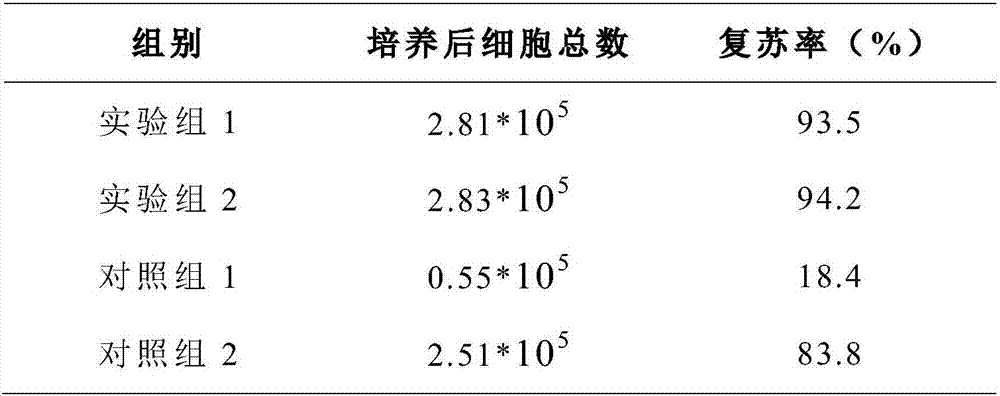Umbilical cord tissue freeze preservation and unfreezing method
A technology for umbilical cord tissue and cryopreservation, which is applied in tissue culture, bone/connective tissue cells, biochemical equipment and methods, etc., can solve problems such as cell chemical damage, reduce the probability of cell damage and apoptosis, and improve freezing. storage effect, the effect of promoting mutual adhesion
- Summary
- Abstract
- Description
- Claims
- Application Information
AI Technical Summary
Problems solved by technology
Method used
Image
Examples
Embodiment 1
[0058] A method for freezing and resuscitating umbilical cord tissue includes the following steps:
[0059] S1: Wash the fresh umbilical cord with normal saline and cut into small pieces, adhere to the wall for 36 hours, and subculture the obtained cells for 6 days;
[0060] S2: Place the passaged cells obtained in step S1 in DMEM medium, add the cryopreservation protection solution that has been sonicated in advance at 2°C, centrifuge at low speed and gently shake and mix, the cryopreservation protection solution is added with At least one cell adhesion molecule and at least one cell activity inhibitor;
[0061] S3: Put the cell mixture obtained in step S2 in liquid nitrogen, and cool to -196°C for storage;
[0062] S4: Take out the frozen cells, immediately transfer them to a 37°C water bath for 1 min, wash them twice with PBS buffer after taking them out, centrifuge and discard the washing solution;
[0063] S5: Add the resuscitation preservation solution that has been ultrasonicall...
Embodiment 2
[0065] A method for freezing and resuscitating umbilical cord tissue includes the following steps:
[0066] S1: Wash the fresh umbilical cord with normal saline, cut into small pieces, adhere to the wall for 48 hours, and subculture the obtained cells for 8 days;
[0067] S2: Place the passaged cells obtained in step S1 in DMEM medium, add cryopreservation protection solution that has been sonicated in advance at 5°C, centrifuge at low speed and gently shake and mix, the cryopreservation solution is added with At least one cell adhesion molecule and at least one cell activity inhibitor;
[0068] S3: Put the cell mixture obtained in step S2 in liquid nitrogen, and cool to -196°C for storage;
[0069] S4: Take out the frozen cells, immediately transfer them to a 37°C water bath for 2 minutes, wash them with PBS buffer 4 times after taking them out, centrifuge and discard the washing solution;
[0070] S5: Add the resuscitation preservation solution that has been ultrasonically treated in...
Embodiment 3
[0072] A method for freezing and resuscitating umbilical cord tissue includes the steps described in Example 1, wherein the specific method of step S1 is as follows:
[0073] S1.1: Take a fresh umbilical cord, wash it with normal saline, collect Wharton’s glue and cut it into 1~2mm pieces, spread it in a cell culture flask, add 5mL primary culture medium, and place it in 5% CO 2 , Culture in a 37°C incubator, and change the medium every 3 to 4 days. The primary medium is a DMEM medium supplemented with 8% fetal bovine serum and 100 mg / L streptomycin;
[0074] S1.2: When the cell confluence reaches 80-90%, collect adherent cells, add 5mL subculture medium after digestion, and place in 5% CO 2 , Cultivate in an incubator at 37°C, and cultivate until the cell fusion degree reaches 80-90%. The subculture medium is supplemented with 12% fetal bovine serum and 2-5 mg / L citrus DMEM medium.
PUM
 Login to View More
Login to View More Abstract
Description
Claims
Application Information
 Login to View More
Login to View More - R&D
- Intellectual Property
- Life Sciences
- Materials
- Tech Scout
- Unparalleled Data Quality
- Higher Quality Content
- 60% Fewer Hallucinations
Browse by: Latest US Patents, China's latest patents, Technical Efficacy Thesaurus, Application Domain, Technology Topic, Popular Technical Reports.
© 2025 PatSnap. All rights reserved.Legal|Privacy policy|Modern Slavery Act Transparency Statement|Sitemap|About US| Contact US: help@patsnap.com



